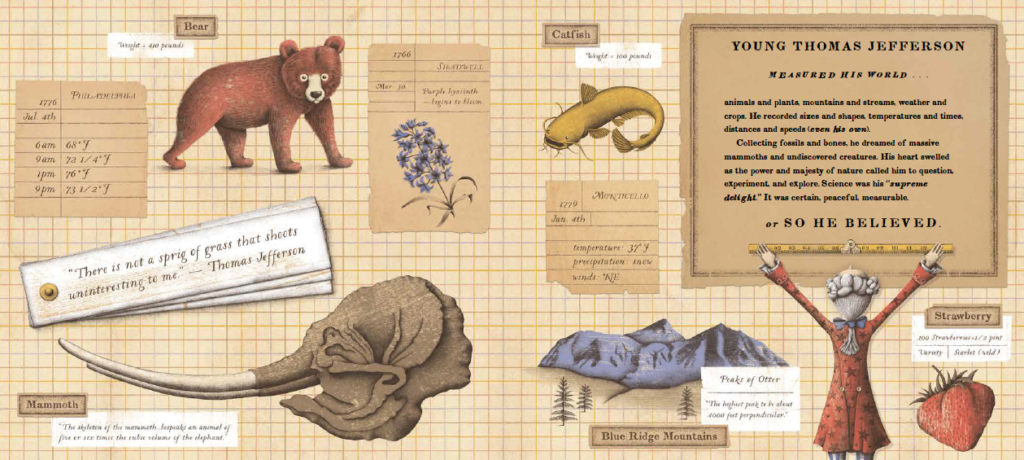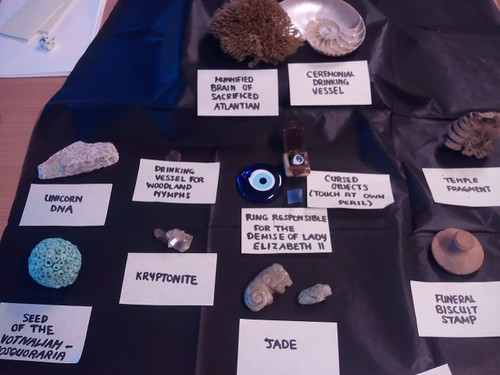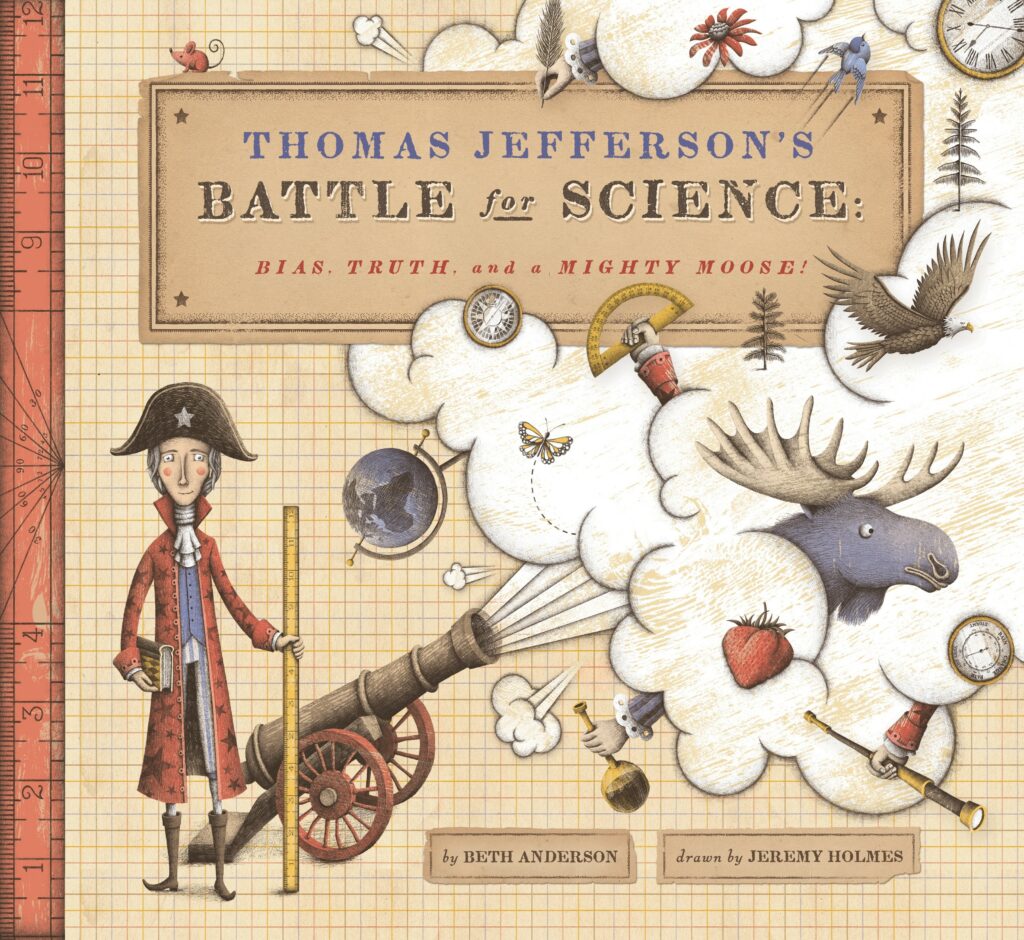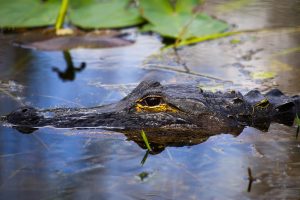GUEST BLOGGER BETH ANDERSON
Thomas Jefferson lived when science was bursting into the spotlight. Like many other people interested in science at the time, he created a “cabinet of curiosities.” He collected bones, fossils, and artifacts of all kinds, whether made by hand or by nature—whatever caught his curiosity. He displayed them in the White House when he was president, and later in his home, Monticello. Many “cabinets”—or mini-museums filled with fascinating items—are now part of museum collections.
Thomas Jefferson’s Battle for Science shares the story of Jefferson’s love of science and his battle for scientific truth. With a notepad in his pocket, he constantly observed, measured, and collected! He studied, explored, and investigated. Science was his “supreme delight”!
The lesson
In this activity, students create their own “cabinet of curiosities.” You can easily adapt it to incorporate a topic in your science curriculum, math/measuring objectives, and language arts standards specific to your classroom needs.
Grouping – whole class, small group, or individual project
Choose a topic
- Consider springboarding off your science curriculum.
- Discuss museums. Talk about different kinds of collections and why we create them. Here is a link to some famous “Cabinets of Curiosities.”
- Ask students what they’re curious about. What do they want to investigate? What would they like to collect? Narrow topics as needed. The collection should spark curiosity, inspire investigation, and allow them to compare and contrast. The possibilities are endless.
- Generate a few questions to tap into curiosity and guide your investigation.
Next – the how
- Collection: Once you know what students will be collecting, determine on how best to “gather” the objects. Consider safety and accessibility. Items such as feathers, leaves, or seeds can be collected outside. For larger or unavailable objects, use images.
- Decide the best way to display the collections. Your “cabinet” can be the classroom (whole group, 1 item per student), a box sectioned off for display (individual or small group), or an individual collection of images placed on a large piece of paper that’s been sectioned into “nooks and crannies.”
Create the “cabinet”
- Students collect the items and arrange in a display/exhibit.
- Museum display information: Young students might find 3 to 5 facts, older ones 5 to 10. What would you like them to include? [habitat, origin, species, measurements, etc.] Demonstrate how to research or measure, and how to verify facts.
- Write to inform: Model how to write an informational/expository paragraph using a set of facts. Create museum information cards or pages with a scientific name and informational paragraph for each item.
Share and compare—Facts and opinions
- After you’ve assembled the “cabinet” and shared facts, elicit student opinions, such as which item is most interesting, valuable, “best,” etc. Explore why they think this way. Are any of these comparisons measurable? Guide students to understand the difference between facts and opinions and discuss why science requires facts.

Celebrate!
- Finally, enjoy a celebration of curiosity! You might share learning by inviting other classes into your cabinet of curiosity, or circulating within your own class, to view your mini museums. Another option is to assemble their writing into a class book.
This cross-curricular activity invites students to explore and investigate a science topic, collect facts through research or measurement, understand differences between fact and opinion, and write to inform. Not only will students be integrating science and language arts, they’ll also be connecting to history.
If you’d like to share photos of your “Cabinets of Curiosities” with author Beth Anderson, please tag her in an online post or drop her an email on her website.
Featured image credit: “Cabinet of Curiosities 6” by Centre for Museology is licensed under CC BY-NC-SA 2.0.
Beth Anderson has always marveled at the power of books. With endless curiosity, a fascination with language, and a penchant for untold tales, she strives for accidental learning in the midst of a great story and hopes to inspire kids to laugh, ponder, and question. A former ELL educator and Reading Specialist, Beth spent her career merging content and language arts to support students across the curriculum. Now her experience in the classroom continues to inspire and inform her writing for children. Beth is the award-winning author of THOMAS JEFFERSON’S BATTLE FOR SCIENCE, CLOAKED IN COURAGE, FRANZ’S PHANTASMAGORICAL MACHINE, REVOLUTIONARY PRUDENCE WRIGHT, TAD LINCOLN’S RESTLESS WRIGGLE, “SMELLY” KELLY AND HIS SUPER SENSES, LIZZIE DEMANDS A SEAT!, and AN INCONVENIENT ALPHABET, with more surprising stories on the way.
Website: bethandersonwriter.com • BlueSky • Threads • Instagram • FaceBook • Twitter/X • Pinterest











Leave a Reply
Your email is safe with me.